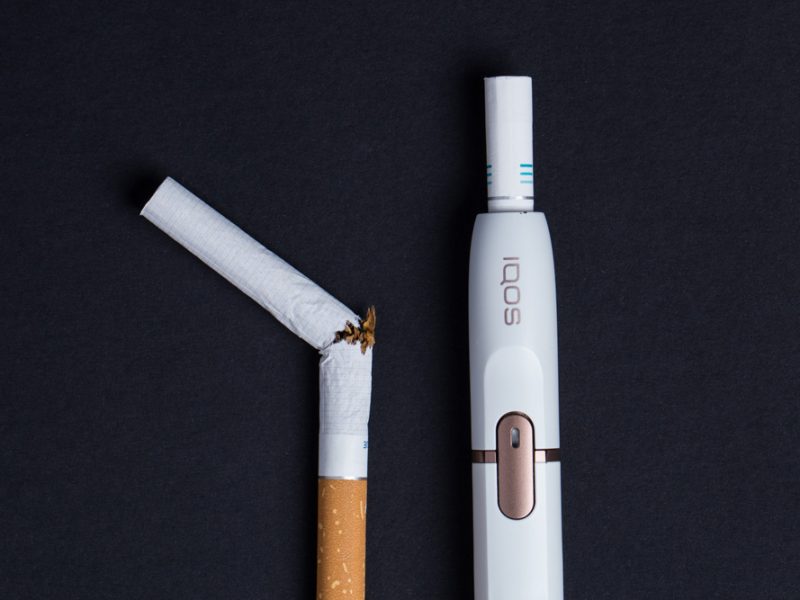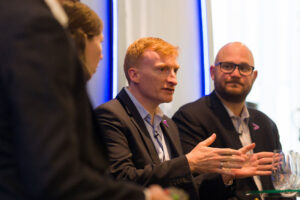Challenge
Procurement teams can have all the right people, skills, systems and processes in place, but without the right connections and relationships with the rest of the business the function can still fail to meet its potential and deliver against the needs of the wider organisation.
That was a challenge identified by the procurement team at the electronics division of Philip Morris International (PMI).
After decades focusing on manufacturing combustible tobacco products, PMI is fairly new to the electronics space. With the company rapidly becoming a leader in smoke-free products, including heated tobacco devices and e-cigarettes, it successfully built a supply base in the highly competitive electronic devices market.
Its Electronic Products Development Centre (EPDC) based simultaneously in Hong Kong and Shenzhen brings together colleagues from eight different functions, including Operations, Supply Chain, Product Design, Legal, as well as Procurement.
While many of the components within the products are PMI’s own intellectual property, the manufacturing of the devices and some of the design is outsourced to third-party electronics manufacturers. This was initially done on a joint development basis, with PMI and two tier-1 manufacturers collaborating on the design and testing of products. This complex set up created a fundamental need to clearly define the area of responsibility and accountability for each and every party involved.
The EPDC has been growing at a rapid rate as has the importance of the smoke-free market it serves. Over the past five years, its total headcount has multiplied more than 22-fold to 250 and a second office has been opened in Shenzhen. But in the past, these teams were operating in silos, with their individual and sometimes unaligned objectives. This at times made it difficult to deliver the speed, agility and efficiency expected by the wider organisation. While all of the new team members have a background in electronics, they come from a variety of companies and operating models and it was therefore important to establish a common approach to work at PMI.
With procurement playing a key role in the development of new products as the gateway between suppliers and internal teams, EPDC procurement took the lead of a new initiative with the goal of integrating teams and empowering the centre to pursue a new product development model that would support PMI as it grows this crucial new market.
Approach
Implementing a new operating model
Dubbed “Electronics 2.0”, the new strategy’s aim was to replace PMI’s joint development model with a more supplier-oriented product development model offering clear accountabilities and allow the company to scale up production with multiple suppliers, and boost efficiency as demand for devices grows.
Rather than jointly developing products with suppliers, in the new model, EPDC teams work together to define PMI’s expectations up-front and then commission the design and manufacture of products from original device manufacturers (ODMs) who take responsibility for delivery – with the exception of the core aerosol system technology which falls entirely within PMI’s purview.
Delivering this at the pace and scale needed, however, required fundamental changes in the way the EPDC teams function internally, with a greater emphasis on common goals and coordination.
Overhauling EPDC’s structure and processes
While expanding the supply base and changing the relationship with suppliers is ultimately a procurement challenge, outsourced production models are by their very nature cross-functional, as multiple internal teams must work with suppliers to ensure they are delivering the required outputs.
The EPDC consists of eight different functional teams, ranging from IT to product development and HR, which were all involved in building PMI’s electronic devices business but ultimately reported back to their respective functional leadership teams at the company’s headquarters in Switzerland.
Procurement understood the need for these teams to build closer bridges and work together towards a common goal – expanding the supply base – rather than narrowly concentrating on their own functional targets.
New team structure
The first step on this journey was the creation of seven interlinked workstreams aligned to the new product development process:
- Supply Base Management – co-led by procurement and legal
- Product Creation – led by product development
- Design verification – led by design & change control
- End-to-End Value chain & footprint – led by supply chain
- Product Quality – led by quality
- System & Enablers – led by IT
- Talent – led by people & culture (HR)
While these workstreams still reflected the capabilities of each of the respective functions, their focus was specifically oriented towards the deliverables they needed to achieve in order to support the overarching strategy. This helped to make it clear to every member of the EPDC what their role was. For instance:
- The Supply Base Management workstream’s areas of focus include reworking the contracting process in line with the new strategy and overhauling EPDC’s approach to supplier relationship management as it expands the supply base
- The Product Creation workstream works on refining the new product introduction/development process
- The Design Verification workstream devises testing guidelines that would apply to products developed by the new suppliers
- The Talent workstream is responsible for recruiting and developing staff needed to deliver the project as the team continues to expand
New ways of working
Besides focusing on common goals from the outset, the teams also needed to work collaboratively to ensure they were on the same page and moving in the same direction at the right pace.
To that end, a steering committee bringing together representatives from each function was established. It coordinates teams on a weekly basis and ensures that each stage in the development process is aligned with the overall strategy.
Meanwhile, the new operating model has changed the nature of the work that the workstreams are focused on. Before, teams would be very involved in day-to-day aspects of the product development process. The engineering team, for instance, would be involved in hands-on R&D tasks and the quality team would manage the details of how to test and analyse product performance. With responsibilities more clearly defined, teams can now focus on critical tasks as well as the bigger picture while monitoring the suppliers’ output. This new allocation means teams work more efficiently, products can be brought to market more rapidly and production can be scaled up at a faster pace.
The new approach in action
With the new streams set up and teams pulling in the same direction, the foundations were set for greater and more efficient collaboration on key initiatives. This, in turn, helps the division to succeed in expanding its supply base and bringing new products to market. Some of these initiatives included:
- Agreeing on a solid product brief and carrying out design verification before the RFQ/RFI, with the aim of clarifying what was expected from suppliers up-front and speeding up the time-to-market. This was a collaboration between the engineering, procurement, and quality teams.
- The procurement, operations, and legal teams collaborated on the creation of triangular contractual relationships between PMI, their ODMs and tier-2 suppliers, allowing PMI to formalise its requirements further up the supply chain.
Outcome
Results
The Electronics 2.0 initiative has helped bring together seven disparate functions into one aligned operating model providing a common sense of direction and improved ways of working. Consequently, the EPDC was able to substantially expand its supply base thanks to the addition of three new ODMs, taking the total number to five within just 18 months. This positions the centre as a strategic enabler of PMI’s mission to grow and thrive in the market for smoke-free products.
Christoph Kalt, director electronics procurement, said: “Two years ago, Electronics 2.0 was a procurement project to expand the supply base. Now it’s our operating model: it’s how we work and it’s how we engage – internally, and with our suppliers.” Specific improvements included:
- Productivity: Working together and pulling in a common direction allowed the division to exceed its 2021 productivity target by 45%
- Speed: Development time for new products has fallen from 18 to 13 months, with an ambition of lowering it further to 12 months soon
- Quality: The higher quality standards achieved through the new ODM model has reduced the return rate of electronic chargers by 54% in just one year
Advice for others
Project leaders of Electronics 2.0 shared the following advice for other procurement teams looking to build cross-functional collaboration on new product development:
- Set stretch targets: While they may be daunting, stretch goals provide focus and encourage people to rise to the challenge
- Clarify expectations: Be clear who is responsible for delivering what and when – both internally and with suppliers
- Teambuilding matters: Cross-functional events and social gatherings help to create and leverage connections between teams
Next steps
As it aims to amplify its impact over the coming months and years, the EPDC will continue to introduce improvements to its operating model to encourage cross-functional collaboration. This includes the creation of an “Electronics Academy” providing a series of training modules aimed at encouraging internal staff to adopt a shared methodology, framework and mindset when working on new device development. It will also introduce a new supplier certification to help enhance supplier capabilities, including an appraisal process and process improvement training. Image: vfhnb12 / Shutterstock.com





















